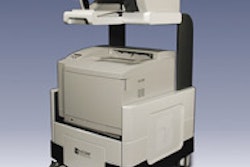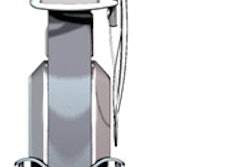There's disappointing news for both high-protein diet devotees and vigilant vegans. According to the latest research on the food-cancer link, tearing into red meat regularly raises the risk for colorectal cancer, but eating bushels of fruits and vegetables may not offer protection against breast cancer. The results of two separate studies appear in the Journal of the American Medical Association.
First, the European Prospective Investigation into Cancer and Nutrition (EPIC) conducted a prospective study of 285,526 women between the ages of 25-70, living in 10 countries: Denmark, France, Germany, Greece, Italy, the Netherlands, Norway, Spain, Sweden, and the U.K.
"The intake of vegetables and fruits has been thought to protect against breast cancer. Most of the evidence comes from cast-control studies (which are) more susceptible to recall and selection bias," wrote lead author Carla van Gils, Ph.D.
"The advantages of our cohort study are its size and the wide range of vegetable and fruit intake, caused by the inclusion of participants living in countries from north to south of Europe" (JAMA, January 12, 2005, Vol. 293:2, pp. 183-193).
The participants were recruited from the general population, as well as through health insurance programs and breast cancer screening programs. Some of the women from the Oxford, U.K., cohort were vegetarians who volunteered for the study. The participants completed a dietary questionnaire, which was designed to capture local dietary habits. Dietary data was collected from 1992-1998 with vegetable and fruit consumption calculated in grams per day; the women were followed up for cancer incidence until 2002.
During the 5.4 years of follow-up, there were 3,659 invasive breast cancer cases. The median age at breast cancer diagnosis was 57 years. On average, breast cancer rates were higher in northern than in southern Europe, the EPIC authors reported. France reported the highest number of invasive breast cancers (1,380) during the study period, while Germany reported the least (189).
"Relative risks for the highest versus the lowest quintile were 0.98 (95% confidence interval [CI], 0.84-1.14) for total vegetables, 1.09 (95% CI, 0.94-1.25) for total fruit, and 1.05 (95% CI, 0.92-1.20) for fruit and vegetable juices," the group stated. "For six specific vegetable subgroups, no associations with breast cancer were observed either." These subgroups included leafy vegetables, fruiting vegetables, onions, and garlic.
The researchers concluded that there was no significant association between fruit and vegetable intake and breast cancer risk. In addition, the suggestion that subgroups of fruits and vegetables are better than others at protecting against breast cancer could not be confirmed with this study. However, the authors pointed out that individual fruits and vegetables may offer protection through antioxidants or anticarcinogens.
"Future analyses of breast cancer incidence in EPIC will therefore aim to examine the associations of risk with specific nutrients," they wrote.
Meaty matters
In the second study, Ann Chao, Ph.D., and colleagues examined the relationship between long-term meat intake and colorectal cancer. Chao is from the American Cancer Society in Atlanta. Her co-authors are from Emory University in Atlanta and the National Cancer Institute in Rockville, MD.
A number of previous reports have warned of a connection between red and processed meat intake and colon cancer. A 2001 meta-analysis of these studies concluded that a daily increment of 100 grams of red or total meat consumption was associated with a 12% to 17% higher risk of colon cancer. However, these risk estimates were not always adjusted for potential confounders (age, energy intake, body mass index), which may have skewed the results, Chao's group stated.
"Clarifying the role of meat consumption in colorectal carcinogenesis is important," the group wrote. "The main strengths of this study are its size, the availability of dietary and other exposure information ... and information on major potential confounders" (JAMA, January 12, 2005, Vol. 293:2, pp. 172-182).
The study population consisted of 148,610 adults (ages 50-74) living in 21 places in the U.S., who were enrolled in the Cancer Prevention Study II Nutrition Cohort (CPS II). Using self-administered questionnaires, the participants provided information on meat consumption in 1982 and again in 1992-1993. They were asked to report their usual eating habits, including the average frequency and serving size of food. CPS II did not collect data on how the meat was cooked or prepared. And it did not compile information on whether the enrollees underwent sigmoidoscopy, colonoscopy, or fecal occult blood testing during the pertinent years.
The following items were considered red meat: bacon, sausage, hamburgers, steaks, liver, and hotdogs. Processed red meats included ham, bologna, and other lunch meat.
The analysis was based on 1,197 cases of colon or rectal cancer diagnosed from 1992-1993 through 2001. Of these, 665 colon cancers and 291 rectal cancers were diagnosed in men, and 532 colon cancers and 179 rectal cancers were found in women.
Adjusting for age and energy intake, the researchers found that a high intake of red and processed meat was associated with a higher risk of colorectal cancer. "Persons in the highest tertile of consumption in both 1982 and 1992/1993 had higher risk of distal colon cancer associated with processed meat (95% CI, 1.08-2.18).... High consumption of red meat ... was associated with higher risk of rectal cancer (95% CI, 1.15-2.52)," the authors wrote.
Also, men reported a greater consumption of red (427 grams/week versus 274 grams/week) and processed meats (95 grams/week versus 43 grams/week). "This association was observed primarily with cancers of the rectosigmoid junction ... with risk increasing significantly with the amount of red meat consumed," the authors explained. In addition, there was a consistent association between distal colon cancer and the prolonged high intake of processed meat.
"It is possible that concentration of stool in the distal portion of the large intestine may contribute to higher cancer risk by increasing exposure to carcinogens as a result of water resorption during transit through the large intestine," they stated.
In an accompanying editorial, Dr. Walter Willett from the Harvard School of Public Health in Boston pointed out that the two studies, while valuable, do come with certain caveats. For the breast cancer study, a small benefit from increased fruit and vegetable consumption cannot be ruled out. For the colon cancer study, more studies are needed that will include information on cooking methods and genetic markers of susceptibility. Additionally, high fruit and vegetable consumption and controlled red meat consumption have been shown to have a positive association with a lower risk of cardiovascular disease.
"Reductions in blood pressure ... provide sufficient reason to consume (fruits and vegetables) in abundance.... Keeping red meat consumption low is best viewed ... as part of an overall dietary ... strategy," he wrote. "Fortunately, substituting pistachio-encrusted salmon and gingered brown basmati pilaf for roast beef with mashed potatoes ... is not a culinary sacrifice" (JAMA, January 12, 2005, Vol. 293:2, pp. 233-234).
By Shalmali Pal
AuntMinnie.com staff writer
January 12, 2005
Related Reading
Oleic acid key to olive oil's anti-cancer effect, January 10, 2005
High-carb diet may increase breast cancer risk, August 11, 2004
More evidence vegetarian diet may cut cancer risk, February 16, 2004
Dietary glycemic load directly linked to colon cancer risk in women, February 4, 2004
Copyright © 2005 AuntMinnie.com



















